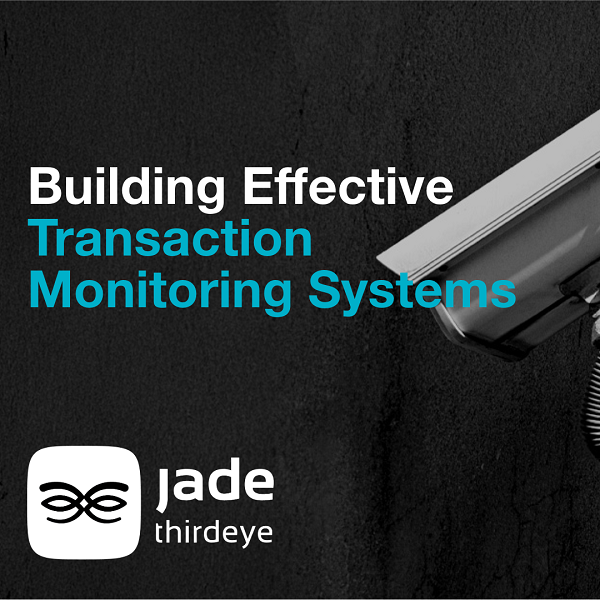
ThirdEye releases Transaction Monitoring System Buyer’s Guide for Financial Institutions
A new comprehensive buyer’s guide released today aims to address the growing challenge faced by mid-sized financial institutions when selecting transaction monitoring systems (TMS) as regulatory expectations intensify and vendor options multiply across Australia, New Zealand, and the UK.
The 12-page guide, “Choosing the Right Transaction Monitoring System: A Guide for Financial Institutions“, addresses what industry experts describe as a critical gap in practical guidance for compliance professionals at institutions that often lack the extensive in-house expertise of tier-one banks.
“The transaction monitoring system market has become increasingly complex, with numerous vendors making technical claims while compliance professionals at mid-sized institutions face the challenge of distinguishing between marketing promises and real-world capability,” said Olly Hodges, Head of Product at Jade ThirdEye, which published the guide. “Our research shows these professionals are navigating significant vendor noise and are concerned about building the internal stakeholder support needed for such important technology investments.”
The Growing Selection Challenge
Recent industry developments have made TMS selection more challenging than ever. The integration of artificial intelligence and machine learning capabilities, evolving regulatory requirements across multiple jurisdictions, and the proliferation of vendor options have created what many compliance professionals describe as “decision paralysis.”
The guide identifies several critical factors often overlooked in vendor evaluations:
- Data Model Flexibility: Many institutions discover too late that vendor data models require significant restructuring of existing data rather than adapting to the institution’s specific needs.
- True Partnership vs. Vendor Relationships: Research shows that mid-sized institutions, unlike larger banks, rely heavily on vendor expertise and support. The guide emphasises evaluating vendor commitment to long-term partnerships rather than just software delivery.
- Regional Regulatory Nuances: With institutions operating across Australia, New Zealand, and the UK, the guide stresses the importance of vendors who understand jurisdiction-specific compliance requirements rather than offering generic solutions.
Beyond Features and Pricing
While most vendor evaluations focus heavily on technical features and cost, the guide argues this approach misses critical factors that determine long-term success.
“We’ve seen institutions select systems based primarily on feature lists and price points, only to struggle with implementation, user adoption, or vendor support issues that weren’t apparent during the procurement process,” explained Hodges. “The most expensive mistake isn’t choosing the wrong features; it’s choosing the wrong partner.”
The buyer’s guide introduces a framework that balances traditional evaluation criteria with often-overlooked considerations:
- Vendor accessibility: Can compliance teams access senior expertise when needed, rather than being relegated to generic support queues?
- Change management capability: How quickly can institutions modify monitoring rules when regulations shift, and can they do so independently?
- Pricing model alignment: Do vendor pricing structures incentivise effectiveness or create financial barriers to comprehensive monitoring?
Addressing Industry-Specific Challenges
It’s clear that retail banks, building societies, credit unions, and non-bank lenders face different challenges when implementing transaction monitoring systems.
For non-bank lenders, it’s essential that a system can effectively monitor lending-specific risks. For building societies and credit unions, partners need to understand member-based structures and regional concentration risks.
“One size fits all simply doesn’t work in transaction monitoring,” noted Hodges. “A system designed for global investment banks may not be the right fit for a regional building society, regardless of its feature set.”
Supporting Long-Term Decision Making
Given the significant investment in time, resources, and stakeholder buy-in required for TMS implementation, the guide emphasises the importance of making decisions that remain valid over years, not just months.
The resource includes a comprehensive checklist specifically designed for mid-sized institutions, covering everything from technical requirements to vendor relationship management. It also addresses the crucial but often overlooked topic of stakeholder management throughout the procurement process.


